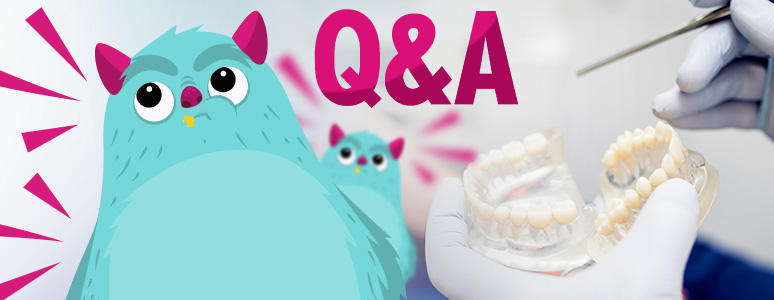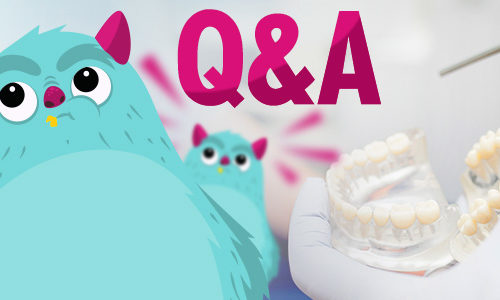-
Is It Bad (Is It OK) To Chew With Only One Side Of The Mouth?
This article is a part of our Q&A series in which we give detailed answers to our readers' questions. Have a question? Don't hesitate and send it to us to get a detailed answer! Chewing is a fundamental activity in our daily lives, essential not only for breaking down food but also for maintaining oral health. However, many people develop a habit of chewing on one side of their mouth. While this might seem like a minor issue, it can have significant implications for dental health. This article explores whether it is bad to chew with only one side of the mouth, the potential consequences, and how to address this…
-
Invisalign Lite vs Full: Difference, Cost, Which Do I Need?
Key Facts Invisalign is a modern orthodontic treatment using clear, removable aligners to straighten teeth Invisalign Lite is targeted at less complex cases requiring minor corrections Invisalign Lite usually lasts about 6 months Invisalign Lite involves fewer aligners (around 10 to 14) compared to Invisalign Full Invisalign Lite is ideal for minor adjustments like slight overcrowding or small gaps Invisalign Lite generally offers a more cost-effective solution due to the shorter treatment time and fewer aligners Both Invisalign Lite and Full provide customized treatment plans based on individual dental profiles What is Invisalign? Invisalign is a modern orthodontic method that employs a series of custom-made, clear plastic aligners to shift…
-
Dentin Dysplasia – Type 1 (I), Type 2 (II), Types, Radiograph, Treatment, Histology, vs Dentinogenesis Imperfecta
Key Facts Dentin dysplasia affects dental development, primarily impacting the dentin, a key component of teeth Dentin dysplasia is a rare condition affecting one in every 100,000 people It usually becomes apparent in childhood and can affect both primary (baby) and permanent teeth The condition is characterized by abnormal dentin structure It’s leading to dental issues like discolored teeth, tooth mobility, or premature tooth loss What is Dentin? Dentin is the layer of tissue beneath the enamel, making up the bulk of a tooth’s structure. It’s harder than bone but softer than enamel. Dentin plays a crucial role in protecting the innermost part of the tooth, the pulp, which houses…
-
Oral Leukoplakia (OL) – Treatment, Causes, Images, Tongue, Differential Diagnosis
Key Facts Oral leukoplakia refers to thickened, white patches that form on the mucous membranes of the mouth, which cannot be wiped away It’s among the most common oral lesions, affecting approximately 1% of the global population While often benign, some types of leukoplakia can be precursors to oral cancer Strongly associated with tobacco use, including smoking and chewing, but can also result from irritations like rough teeth or fillings Treatment depends on the lesion’s appearance, the presence of symptoms, and if there’s evidence of cancerous changes What is Oral Leukoplakia? Oral Leukoplakia, derived from the Greek words leuko (white) and plakia (patch), describes white patches that form on the…
-
Dentinogenesis Imperfecta – Types, Treatment, Radiograph, Type 1 2 3
Key Facts Dentinogenesis Imperfecta (DI) is a rare genetic disorder affecting the formation of dentin It is characterized by discolored (often blue-gray or yellow-brown) and translucent teeth The condition makes teeth vulnerable to wear, breakage, and loss DI can affect both primary (baby) and permanent teeth The disorder is linked to mutations in the DSPP gene There are three types of DI, with Type II being the most common What is Dentinogenesis Imperfecta? Dentinogenesis Imperfecta is a hereditary condition that impacts the formation of dentin – the calcified tissue underneath the tooth’s enamel. Dentin plays a significant role in the strength and structure of teeth. When it’s compromised due to…
-
Enamel Hypoplasia – Treatment, Causes, Types, in Adults, vs Fluorosis, vs Amelogenesis Imperfecta
Enamel hypoplasia, a condition characterized by an enamel defect, affects both a child’s baby teeth and permanent teeth. It involves inadequate or incomplete development of dental enamel, leading to hypoplastic teeth that are often more susceptible to dental problems. Understanding the causes, symptoms, and treatment options is crucial for maintaining oral health. Key Facts Enamel hypoplasia refers to the inadequate development or thickness of tooth enamel It can arise due to genetic factors, prenatal issues, early childhood illness, nutritional deficiencies, or exposure to certain environmental factors Teeth affected may be more prone to cavities and can have cosmetic concerns Depending on severity, treatments range from dental bonding to veneers or…
-
Sialadenitis – Treatment, Symptoms, Radiology, ICD-10, Pathology, Antibiotics
Key Facts Sialadenitis is an inflammation of the salivary glands, which produce saliva, an essential fluid for oral health It can result from bacterial or viral infections, obstructions, or autoimmune conditions Patients may experience pain, tenderness, redness, and swelling over the affected gland, often accompanied by fever Treatment ranges from antibiotic therapy, hydration, warm compresses, and, in some cases, surgical intervention Proper oral hygiene and regular dental check-ups can significantly reduce the risk of developing sialadenitis What is Sialadenitis? Sialadenitis, at its core, is the inflammation of one or more of the salivary glands. The human mouth houses three primary salivary glands: the parotid, submandibular, and sublingual glands. Any of…
-
Ranula Under Tongue – Radiology, Treatment at Home, Surgery, Pathology, Excision
A ranula is an oral condition characterized by a mucus retention cyst, typically forming under the tongue in the oral cavity. This cystic lesion is often a result of a damaged salivary gland, specifically the major salivary glands like the submandibular gland or, less commonly, from the minor salivary glands. It’s one of the more common salivary gland disorders and can range from a simple oral ranula to a more complex plunging ranula. Ranulas present as swelling in the mouth, which can range from minor inconveniences to significant obstructions, depending on their size and location. Understanding ranula formation, diagnosis, and treatment is crucial for oral healthcare professionals. Key Facts The…
-
Odontoma – Compound, Complex, Radiograph, Treatment, Dilated
Key Facts Odontomas are benign (non-cancerous) tumors made up of dental tissue, often appearing as a mixture of enamel, dentin, cementum, and pulp They are primarily classified into two types – compound and complex Considered one of the most common types of odontogenic tumors Often linked to trauma or infection in primary teeth or genetic factors Usually detected during routine dental X-rays Surgical removal is the standard procedure for most cases What is Odontoma? An odontoma refers to a benign dental tumor, typically composed of all the different types of dental tissues. It can be thought of as a tooth that’s gone astray in its formation process. While it does…
-
Osteoradionecrosis (ORN) of the Jaw – Treatment, Definition, Radiology, Symptoms, Classification, ICD-10
Key Facts Osteoradionecrosis (ORN) is a severe bone disease that arises as a side effect of radiation therapy primarily used to treat head and neck cancers ORN primarily affects the jaw, especially the mandible It is one of the most severe complications of radiation therapy High doses of radiation can compromise the bone’s blood supply, leading to necrosis Adequate dental care before radiation therapy and avoiding trauma to irradiated areas can reduce the risk Depending on severity, treatments can range from medication and hyperbaric oxygen therapy to surgical interventions What is Osteoradionecrosis? Osteoradionecrosis, often abbreviated as ORN, is a condition where bone starts to deteriorate and die after radiation therapy.…


